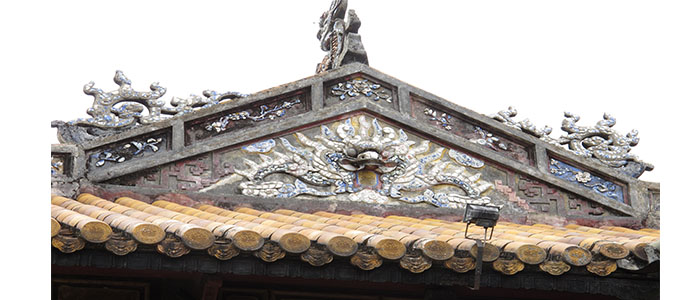
รูปแบบสิมญวนในเขตภาคตะวันออกเฉียงเหนือกับพัฒนาการทางงานช่าง
Styles of Vietnamese Influenced Ordination Hallsin Northeast Siam and the Development of the Artwork
โดย ชวลิต อธิปัตยกุล / By Chawalit Atipattayakul
Damrong Journal, Vol 13, No.2, 2014
บทคัดย่อ:
งานวิจัยเรื่องรูปแบบสิมญวนในเขตภาคตะวันออกเฉียงเหนือกับพัฒนาการทางงานช่าง ซึ่งผลการวิจัยได้สรุปประเด็นดังนี้ การปรากฏตัวของสิมญวนเกิดขึ้นในช่วงเวลาที่สภาพเศรษฐกิจในอีสานอยู่ในช่วงยากจน แต่ทว่าหากเป็นหมู่บ้านใหญ่ก็มักว่าจ้างโดยใช้การสบทบทุนของผู้คนภายในชุมชนนั้นๆ และร่วมกันเป็นลูกมือในการก่อสร้างหากไม่ได้บริจาคปัจจัย เหตุผลอย่างหนึ่งของการสร้างสิมญวนเกิดจากการเมืองการปกครองจากส่วนกลางของประเทศไทยไม่มีผลต่อการก่อสร้างสิมในภาคอีสานจนถึงยุคจอมพลป. พิบูลสงคราม ที่มีนโยบายให้ปฏิบัติตาม ภายใต้แนวคิดรัฐนิยมหนึ่งในนั้นคือ ต้องการให้อุโบสถเป็นแบบมาตรฐานเดียวกัน จึงมีการปฏิบัติตามนโยบายบ้างซึ่งเป็นเฉพาะในเขตอำเภอเมืองหรืออำเภอที่มีขนาดใหญ่เท่านั้น ส่วนในเขตต่างอำเภอห่างไกลไม่มีผลจึงเกิดการสร้างสิมญวน เมื่อช่างญวนเป็นผู้รับจ้างช่างย่อมสอดใส่คติของตนเองปะปนเข้าไปในชิ้นงานทุกครั้ง ผนังรับโครงสร้างส่วนบนของหลังคา คือเทคนิคที่โดดเด่นของช่างญวนจากในแง่ประวัติศาสตร์ศิลปะพื้นถิ่น รูปแบบของสิมญวนที่มีความชัดเจนขึ้น คือระหว่าง พ.ศ. 2443-2510 ถือได้ว่าเป็นรูปแบบงานศิลปะสถาปัตยกรรมที่มีรูปแบบเฉพาะของตนเองที่เกิดขึ้นในภาคอีสาน
ABSTRACT:
Recent research has found that the appearance of the Vietnamese influence in the artwork of Northeastern Thailand occurred during a period which was witness to poor economic conditions. As such, a religious construction in a large community was supported by fundraising in order to hire the construction workers, who were often Vietnamese. Due to the political conditions at the time, the central administration of the government of Siam had no influence over the construction of ordination halls in the Northeast of Siam until Field Marshal Plaek Phibunsongkhram came into power. As such, important cities and main districts had to follow the political policy of the central government which was reflected in all sacred, religious and cultural places that they built.
Due to the fact that the Vietnamese were employed as a skillful labour force, they inserted their own faith, beliefs, and moral precepts into the buildings they worked on. One of the most outstanding techniques employed by the Vietnamese workers was a pattern found on the top of the wall of the structure where it meets the roof in many Vietnamese influenced ordination halls. However, other decorations exist according to the trends of each period. From 1900–1967, the patterns from Vietnamese influenced ordination halls were obvious and of an outstanding quality in the Northeast of Siam and it is said that this architectural style is now an integral part of Buddhist architecture in the Northeast of Siam.











